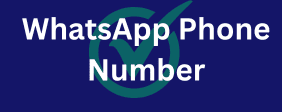I’m writing this from a place of frustration, both as a developer and as a professor. It’s extremely likely that education will never be the same in a post-pandemic world. And while there is a lot we are doing right, there are other areas where remote learning still has a long way to go.
It’s disheartening to see how much we’ve achieved in User Experience (UX), how we are building software shaped by how people think and perceive the world. And yet, remote learning still clings to tools that are cumbersome and difficult to navigate.
A Tale of 3 Users
When we talk about remote learning, we have to talk about the 3 types of users that share the common space of the virtual classroom: teachers, students, and managers.
Students are by far the most common c level contact list type of user. They are primary consumers and sometimes content creators. Their engagement tends to be centered around accessing lectures, reading material, and doing activities.
Teachers are primarily content creators. They build the virtual classroom, organize the information, design activities, produce videos, lectures, text, and recordings. They also need management tools to keep track of their student’s progress, and security tools to prevent plagiarism.
Finally, we have the managers, whose job is to supervise. They create the classrooms, assign schedules, give permissions to teachers and create student lists. They are the ones with the eye-bird view of the learning process.
Here we have 3 very different types of users who share the same space. Therefore, a learning platform needs to provide the tools for every user to carry out their activities within the virtual classroom.
If only it was that simple…
The Virtual Classroom is Not Virtual Enough
Quickly, go on Youtube and search “How differences between a ux writer and a copywriter to calculate a definite integral.” Within less than a minute you’ll find dozens upon dozens of videos of teachers and math enthusiasts explaining the process in detail.
In order to watch the same explanation in the remote learning platform we use in our college, students have to log in, enter the classroom, search for the right module, look at the list of resources, and finally click on the right video.
Say what you will about Wikipedia, TikTok, and Instagram, but from a UX perspective, they are miles and above most remote learning tools out there. Their developers understand how to direct users towards the information they want on a fundamental level.
From a User-Centered Design to a Learner-Centered Design
There is another aspect of this debate review business that people rarely touch upon. The person who bears the biggest burden in a virtual classroom environment is the teacher. Let me explain what I mean.
There is just one small problem: you aren’t an architect or engineer. Teachers aren’t software developers (at least most of them aren’t), and yet, we are giving them the responsibility to customize a virtual environment. They are in charge of creating the content and building the user experience for the student.
